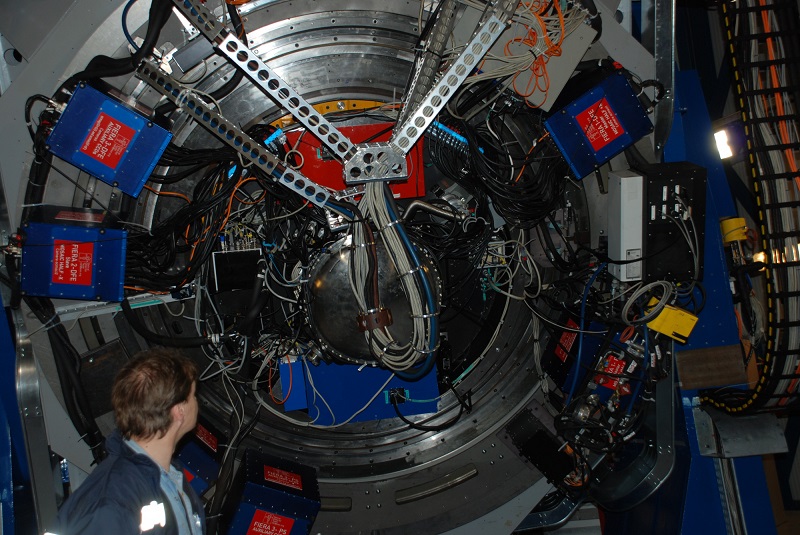Groningse sterrenkundigen halen drie grote aardscheerders van lijst
Een team van sterrenkundigen van de Rijksuniversiteit Groningen heeft voor drie grote, mogelijk gevaarlijk geachte planetoïden aangetoond dat die geen risico op een inslag leveren in de komende honderd jaar. Ze kwamen tot hun resultaten na spitwerk in telescooparchieven met behulp van geavanceerde datascience-technieken.

Aardscheerders (of NEO's, naar het Engelse near-earth objects) zijn planetoïden die dicht bij de aarde komen. De NASA en de ESA hebben een lijst met ongeveer 1350 gevaarlijke aardscheerders die binnen honderd jaar mogelijk op aarde inslaan. Om de aardscheerders in de gaten te houden, gebruiken ze speciale telescopen.
De onderzoekers van de Rijksuniversiteit Groningen (RUG) legden de lijst met gevaarlijke aardscheerders langs honderdduizenden foto's van de Europese VLT Survey Telescope in Chili. Deze telescoop heeft een onder Nederlandse leiding ontwikkelde 268-megapixel groothoekcamera van 700 kilogram, OmegaCAM genaamd. Hij kijkt vaak dieper en verder dan de officiële aardscheerdertelescopen.

Gronings rekencentrum
De honderdduizenden afbeeldingen worden opgeslagen, verwerkt en geanalyseerd met in Groningen ontwikkelde softwaresystemen om grote sterrenkundige gegevensbestanden hanteerbaar te houden. De software draait bij het rekencentrum van de Rijksuniversiteit Groningen.
De sterrenkundigen ontdekten op de archieffoto's tienduizenden voornamelijk ongevaarlijke kandidaat-planetoïden. Ook konden ze van drie tot voor kort gevaarlijk geachte aardscheerders duidelijker de baan bepalen. Daaruit bleek dat die aardscheerders minder gevaarlijk zijn dan gedacht. Eén planetoïde bleek juist gevaarlijker. Gelukkig is dat een vrij kleine van slechts enkele meters doorsnee.
2019 DP
Een voorbeeld van een tot voor kort gevaarlijk geachte planetoïde is de veertig meter grote 2019 DP. Die aardscheerder is officieel ontdekt in 2019, maar de Groningers vonden de aardscheerder terug op archiefbeelden uit 2017. "Dankzij die voor-ontdekking konden we de baan van 2019 DP flink nauwkeuriger bepalen", zegt de leider van het onderzoek Teymoor Saifollahi (RUG), "We weten nu dat 2019 DP niet zo dicht in de buurt van de aarde zal komen als gedacht. NASA en ESA hebben 2019 DP dan ook inmiddels verwijderd van de lijst."
Rees Williams van het Donald Smits Centrum voor Informatie Technologie van Rijksuniversiteit Groningen vult aan: "Dit is een mooi voorbeeld hoe waarnemingen en IT-systemen van sterrenkundigen ook maatschappelijke meerwaarde hebben."
Dit werk werd mogelijk gemaakt door financiering gecoördineerd door ESA's Planetary Defence Office. Er is gebruikgemaakt van de Big Data Layer van het Target Proeftuin Project: Mining Big Data. De Target Proeftuin wordt ondersteund door Samenwerkingsverband Noord Nederland (SNN) en financieel ondersteund door het Europees Fonds voor Regionale Ontwikkeling. Het datascience softwaresysteem AstroWISE draait op krachtige databases en rekenclusters van het Donald Smits Centrum van de Rijksuniversiteit Groningen dankzij steun van onder meer NOVA.
Bron: NOVA/astronomie.nl
